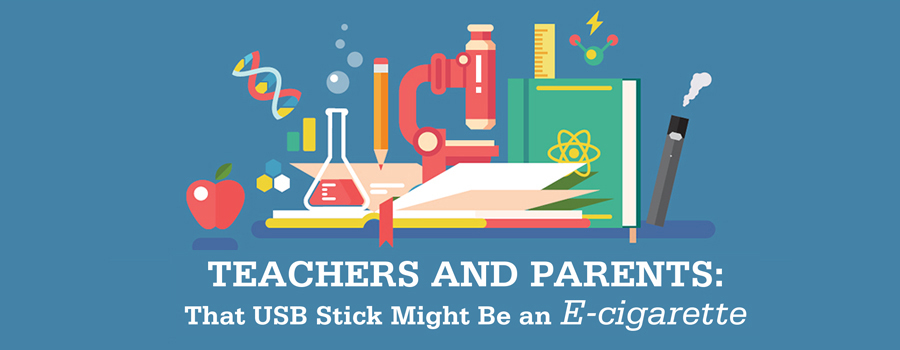 The prevalent use of electronic cigarettes, or e-cigarettes, among teenagers across the United States has become a public health crisis, which also affects students who live in the East Greenbush Central School District.
The prevalent use of electronic cigarettes, or e-cigarettes, among teenagers across the United States has become a public health crisis, which also affects students who live in the East Greenbush Central School District.
According to the Centers for Disease Control and Prevention, 1 in 5 high school students have used an e-cigarette in the past 30 days. At Columbia High School, and even at Goff Middle School, students have been vaping in school bathrooms, hallways and parking lots. Just this school year, more than a dozen district students have received discipline for vaping on school grounds.
“Students are not aware how dangerous vaping is and many of them are already becoming addicted,” said Columbia Principal Michael Harkin. “This is an epidemic that we all need to work together to stop.”
The Dangers of Vaping
E-cigarettes contain harmful substances, including nicotine, heavy metals such as lead, volatile organic compounds and cancer-causing agents. They are not safe for youth, young adults, pregnant women or adults who do not currently use tobacco products, according to the CDC.
As of November 13, there have been 2,172 cases of lung injuries associated with e-cigarette use as well as 42 deaths in the United States.
The FDA and CDC have identified vitamin E acetate as a chemical of concern related to the recent lung injuries, however “evidence is not yet sufficient to rule out contribution of other chemicals of concern.” The only commonality among all cases is that patients report the use of e-cigarette, or vaping products with e-juice and/or THC. Since the specific compound or ingredient causing lung injury are not yet known, the only way to assure that you are not at risk while the investigation continues is to consider refraining from the use of all e-cigarette or vaping products.
Parents should be aware that New York State recently raised the smoking age for all tobacco products to 21, and that this law includes e-cigarettes and vaping devices. School district policy also prohibits tobacco use as well as e-cigarettes “in all school district buildings, on school grounds, and in any vehicle used to transport children or personnel.”

E-Cigarettes are the leading type of youth tobacco product (courtesy CDC).
Key Facts About E-Cigarettes and Vaping Products
- Electronic cigarettes — or e-cigarettes — are also called vapes, e-hookahs, vape pens, tank systems, mods, and electronic nicotine delivery systems (ENDS).
- Using an e-cigarette product is commonly called vaping.
- E-cigarettes work by heating a liquid to produce an aerosol that users inhale into their lungs.
- The liquid can contain: nicotine, tetrahydrocannabinol (THC) and cannabinoid (CBD) oils, and other substances and additives. THC is the psychoactive mind-altering compound of marijuana that produces the “high.”
Other Safety Concerns
In addition to the recent lung injuries in the news and the risk of e-cigarette use leading to nicotine addiction, the district has concerns about the high potency of marijuana/THC used in vape pens. If students use these products while at school, or worse yet, before driving to or from school, they could be a danger to themselves and others.
THC levels have increased in all forms of marijuana in recent years:
- Leaf Marijuana
-
-
- 1975: 2%
- 1980’s-1990’s : 2-4%; High End 7%
- Now: 15-20% (Dispensaries even higher; 30%)
- Dabs/Wax/Oil/Shatter/Budda
- Home 60%’s THC
- Dispensaries 80-90%’s THC (up to 98% THC)
-
East Greenbush CSD Prevention Efforts
East Greenbush Central School District has used a variety of methods to educate students, parents and staff about both the prevalence and danger of vaping. These efforts have been led by Student Assistance Counselor Alyssa Evans, who is contracted by the district from the Rensselaer County Department of Mental Health.
“As a district we have focused efforts on being responsive, proactive and preventive in continually educating our youth and school community in new ways to promote up-to-date accurate information, and healthy decision making,” said Mrs. Evans, who splits her time between Columbia and Goff. “This is a very confusing and dangerous time when it comes to substances. We want to make sure we are speaking the same language and have an accurate and science-based understanding.”
Mrs. Evans has emphasized to two different issues: 1) Use of nicotine (e-juice/pods) with vapes 2) Use of THC (marijuana) oils and concentrates with vapes or dab pens.
“These things are a modern, more complicated, and more potent version of yesterday’s cigarette and green leaf marijuana,” she said. “We are combating a lot of misinformation and misconceptions in today’s society and media. I think the key to most successfully impacting our youth is how do we do some of those strategies we have been implementing in new ways and keep it fresh. This has really been a collaborative effort in working with administration, SRO’s, safety and security staff, Health teachers, Athletics, SADD Clubs, and community agencies to wrap around our youth.”

Columbia SADD Club partnered with Capital District Tobacco-Free Communities to educate students about the dangers of tobacco and e-cigarettes at the Great American Smokeout.
Prevention efforts in the schools have included:
- Health Class Lessons for middle school and high school students (2017-18, 2018-19, 2019-20)
- Informative presentations to staff, students and parents
- “Not Again Big Tobacco”
- “Time to Clear the Air: On Vape”
- “The Price of Cool”
- “E-cig, Substances, and Paraphernalia”
- “The Tobacco Industry Has a Kid’s Menu: Vape”
- “Under the Influence – SAP, Policy, Drug Trends and Culture”
- “Not Your Mama’s Marijuana”
- Newsletters sent to staff, students and parents
- School Events
- Columbia SADD Club participated in “Kick Butts Day event & pledge” at Rensselaer County Legislature meeting
- Health Table Events
- Health Awareness Week presentations from guest speakers
- Flyers posted in schools to remind students of vaping health risks
- Vape Facts campaigns
- Informational announcements by SADD Club to peers during Guide Room.
- Parent workshop titled “Dangers of Vaping and the Fight to Combat the Heroin and Opioid Crisis” scheduled for January 28, 2020
How Are Kids Getting Vape Products?
- Vape products are all over social media
- Many promote the sale of their products right from their accounts
- Website age gates are easily bypassed, and kids use a parent’s name for shipping. In fact, kids successfully buy e-cigs online 94% of the time.
- Many vape companies have names that wouldn’t raise a red flag on account or credit card statements
- Alternative money sources – PayPal, credit card, gift cards, etc.
- Orders can also be shipped to the homes where parent(s) are at work when the mail comes
- Clerks at tobacco shops, vape stores, gas stations and convenience stores might not enforce the law to not sell to anyone under 18 years old
- Get or buy from peers and/or friends
- Adults (family, patron of a convenience store, etc.)
Parent Tips
- Know the facts
- Get credible information about e-cigarettes and young people
- Be patient and ready to listen
- Avoid criticism and encourage an open dialogue
- Remember, your goal is to have a conversation, not to deliver a lecture
- It’s OK for your conversation to take place over time, in bits and pieces
- Answer their questions
- Set a positive example by being tobacco-free
- If you use tobacco, it’s never too late to quit. For free help, visit smokefree.gov or call 1-800-QUIT-NOW
- START THE CONVERSATION
- Find the right moment
- A more natural discussion will increase the likelihood that your teen will listen. Rather than saying “we need to talk,” you might ask your teen what he or she thinks about a situation you witness together, such as:
- Seeing someone use an e-cigarette in person or in a video
- Passing an e-cigarette shop when you are walking or driving
- Seeing an e-cigarette advertisement in a store or magazine or on the internet
- Ask for support
- Not sure where to begin? Ask your health care provider to talk to your teen about the risks of e-cigarettes
- You might also suggest that your teen talk with other trusted adults, such as relatives, teachers, faith leaders, coaches, or counselors whom you know are aware of the risks of e-cigarettes
- These supportive adults can help reinforce your message as a parent
- A more natural discussion will increase the likelihood that your teen will listen. Rather than saying “we need to talk,” you might ask your teen what he or she thinks about a situation you witness together, such as:
Resources
- Electronic Cigarettes Information (CDC)
- Outbreak of Lung Injury Associated with the Use of E-Cigarette, or Vaping, Products (CDC)
- Know the Risks: E-Cigarettes & Young People (Surgeon General)
- Campaign for Tobacco-Free Kids
- Percent of Youth Using Electronic Cigarettes Doubles (NYS Department of Health)
